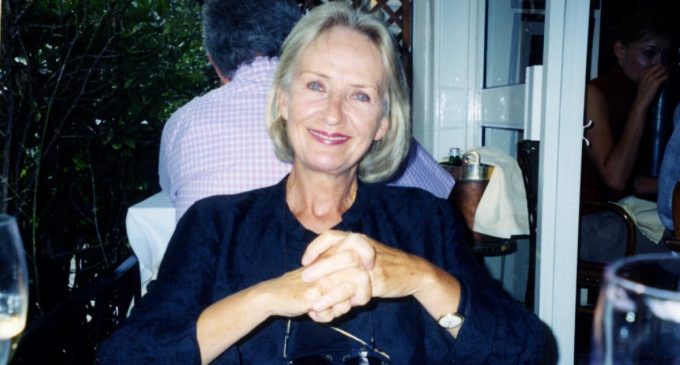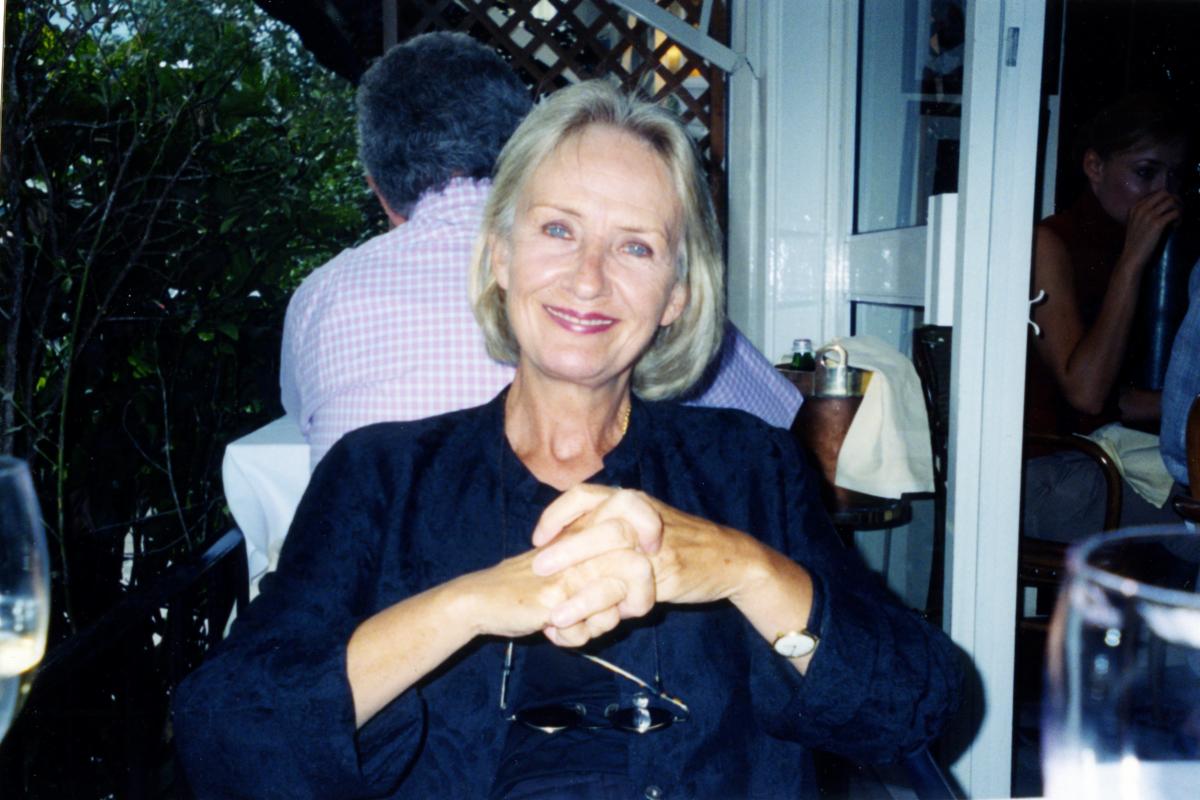Remembering Pauline Sutcliffe

Remembering Pauline Sutcliffe
8th, January 1944 – 13th, October 2019
It is with great sadness that we announce
the passing of a remarkable woman,
Pauline Cronin Sutcliffe,
Stuart Sutcliffe’s sister.
Condolences can be sent to:
official1@StuartSutcliffeArt.com
These will be compiled in a memorial dedication at a future date.
Rest in Peace Beautiful Lady.
Pauline penned a poignant memoir of her brother “forgotten” Beatle Stuart Sutcliffe, which is a remarkable chronicle of the early days of the world’s most influential pop group. One of the founding members and a close friend of John Lennon, Sutcliffe left the band after their Hamburg sojourn in order to pursue his promising career as an artist, dying shortly thereafter of a brain hemorrhage. In this book, his sister Pauline sheds new light on the Beatles’ formative period—the rivalry with McCartney, how George Harrison tried to keep the peace, the truth about Stuart’s intense relationship with Lennon, and why Lennon was haunted by guilt over her brother’s death.
The brain haemorrhage that led to Stuart Sutcliffe’s death was caused by his closest friend, claims the sister of the former bass player. And the proof is in the archive she is about to auction, writes James Morrison
The sister of Stuart Sutcliffe, the “fifth Beatle”, is to make public startling new evidence that strengthens her claim that his death was caused by a kick to the head from John Lennon. Pauline Sutcliffe, who believes her brother was beaten up by Lennon in the months before he died, is to sell off a huge archive containing a sketchbook that indicates a rapid decline in his mental health after the alleged incident. The timing of the pad’s entries will bolster her case that the brain haemorrhage that killed Sutcliffe at the age of 21 was caused not by a street brawl, as has long been supposed, but by a blow to the head from his closest friend. Beatles historians have long been divided over the cause of the haemorrhage that led Sutcliffe, who left the band after two years to pursue a fine-art career, to collapse in Hamburg on 10 April 1962. At the time, medical specialists found no trace of disease, and it has long been argued that his death was ultimately the result of injuries sustained in a fight up to three years earlier, in which Lennon is said to have defended him.
However, Ms Sutcliffe believes the decisive factor was a fight he had with Lennon himself. It is this theory that gives one of the many sketchbooks in the Sutcliffe archive, valued at £1m and to be auctioned at Bonhams later this month, its significance. The black book – dated to October 1961, after the alleged Lennon fight – contains a series of barely legible scrawls and pained exclamations apparently reflecting Sutcliffe’s gradual mental collapse.
The pages of the book are peppered with cries for help. Words and phrases such as “torment”, “shout”, “explode” and “the bloody brain” appear in shaky handwriting, often surrounded by exclamation marks and accompanied by unsettling abstract designs. Elsewhere, Sutcliffe uses sketches to “dissect” his brain and tries to rationalise his condition while comforting himself with details of the help he can expect from medical specialists. The book’s content stands in stark contrast to that of the various earlier pads included in the archive, which show Sutcliffe flowering as a gifted draughtsman and poet.
In her recent biography of Sutcliffe, The Beatles’ Shadow, Ms Sutcliffe wrote: “I believe that the cerebral haemorrhage that cost Stuart his life was caused by an injury inflicted by John in a jealous rage. A postmortem revealed Stuart had a dent in his skull, as though from a blow or kick. And a few months earlier, John had viciously kicked my brother in the head in a sustained, unprovoked attack.” Yesterday she reiterated this belief and said she hoped the auction at Bonhams on 29 July would allow the public to make up its own mind if these and other theories about her brother’s life were true. Referring to the commonly held view that Sutcliffe’s brain was damaged in a fight as far back as 1959, she said: “The medical opinion is that something in 1959 will not have waited three years. There was a later beating-up from John and others have reported it without any reference to me at all.” Asked if she believed the punch-up with Lennon was the most significant contributing factor to her brother’s death, she replied: “Yes.” She also re-stated her belief that Sutcliffe and Lennon, who became close friends while studying together at Liverpool College of Art, had a homosexual affair. “John said himself at one point that this happened.”
Ms Sutcliffe’s renewed assertions are already provoking debate among Beatles aficionados. Alan Clayson, with whom she co-wrote Backbeat, the film based on Sutcliffe’s life with the Beatles, dismissed the claim, saying it was a direct contradiction of conclusions she came to with him. “We concluded that Stuart wasn’t beaten up by John Lennon – his condition was brought on by an overuse of amphetamines,” he said. Mr Clayson believes Sutcliffe was only ever involved in one significant fight, at Lathom Hall, Seaforth, Liverpool, in early 1961. On this occasion, he said, the “only involvement Lennon had was to wade in and help him”.
The sketchbook, valued at £3,000 to £4,000, is only the tip of a huge iceberg of valuable memorabilia contained in the archive. Also included is a series of “lost” Beatles songs that may or may not have been co-written with Lennon during Sutcliffe’s fleeting time as the band’s bass player between 1959 and 1961.
The witty, frequently wistful, lyrics appear to give the lie to the widely held belief that Sutcliffe, though a gifted visual artist, was no songwriter. One song, written in 1959, begins: “Everybody’s ever got somebody caring. Everybody’s got a love they’re sharing. Everybody but me.”
Among the other items is a sheaf of letters written to Sutcliffe’s family by his German fiancée, Astrid Kirchherr, after his death. In them, she heaps praise on Lennon and George Harrison but pointedly fails even to mention Sutcliffe’s other bandmates, Pete Best or Paul McCartney. Ms Sutcliffe suggests the omission of McCartney was intentional, and reflected the intense rivalry between him and her brother for Lennon’s affections.
Ms Sutcliffe, who has just sold a smaller archive of ephemera to the Museum of Liverpool Life, says her main motive for releasing the material is to “give it its wings” and allow the public to judge its merits for itself. “Hopefully, it reveals he wasn’t just a pretty face who played the bass guitar very badly,” she said.
What’s going under the hammer?
Item: Sutcliffe’s final sketchbook
What it is: Black book containing scrawls and abstract sketches
Estimated value: £3,000-£4,000
Item: Lyrics for five “lost” Beatles songs
What they are: At least one is thought to have been co-written with John Lennon
Estimated value: £3,000-£4,000
Item: Letters from Astrid Kirchherr to Sutcliffe’s family
What they are: The eight letters praise Lennon and George Harrison, who is said to “sing a lovely song”
Estimated value: £5,400-£7,000
Item: Love notes from Sutcliffe to Astrid
What they are: Three handwritten notes, including one which begins: “My beautiful darling. I love you. Thank you so much for your love”
Estimated value: £1,400-£2,000
Sources: McCartney Times, StuartSutcliffeArt.com, Independent, James Morrison




There are no comments at the moment, do you want to add one?
Write a comment